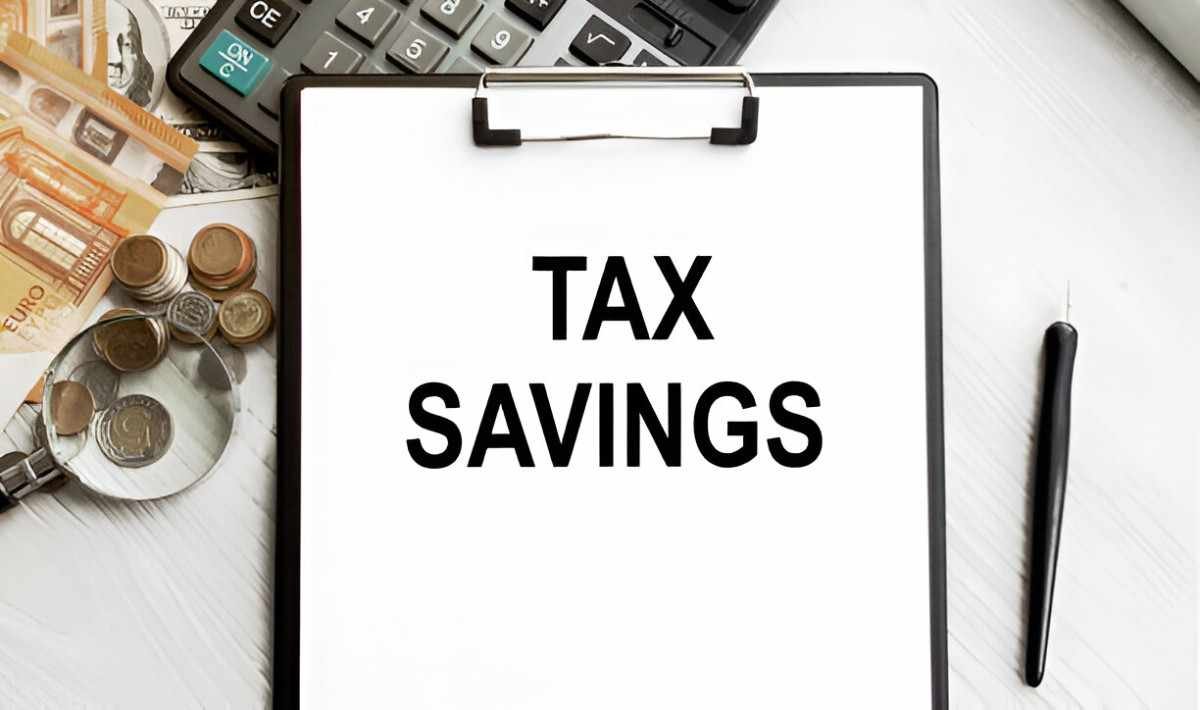As someone who has spent years navigating the complexities of personal finance and tax planning, I’ve come to appreciate the power of tax-advantaged accounts. One of the most underrated tools in this space is the Tax-Exempt Special Savings Account (TESSA). While TESSAs are not a mainstream option in the United States, understanding their structure and benefits can provide valuable insights into how tax-exempt accounts work and how they can be leveraged to maximize savings. In this guide, I’ll break down the concept of tax-exempt savings accounts, explore their potential benefits, and draw parallels to similar accounts available in the U.S.
Table of Contents
What Is a Tax-Exempt Special Savings Account?
A Tax-Exempt Special Savings Account (TESSA) is a type of savings account that offers tax-free interest on deposits. Originally introduced in the United Kingdom in the 1990s, TESSAs were designed to encourage individuals to save by providing a tax-efficient way to grow their money. While the TESSA itself is no longer available in the UK, its principles are still relevant, especially when compared to U.S.-based tax-advantaged accounts like Roth IRAs and Health Savings Accounts (HSAs).
The key feature of a TESSA was its tax-exempt status. Interest earned on deposits within the account was not subject to income tax, making it an attractive option for savers. However, there were restrictions on how much you could deposit and how long the funds had to remain in the account to qualify for the tax benefits.
How Tax-Exempt Accounts Work
To understand the appeal of tax-exempt accounts, let’s start with the basics of how they function. In a traditional savings account, the interest you earn is considered taxable income. For example, if you earn \$1,000 in interest and your marginal tax rate is 24%, you would owe \$240 in taxes, leaving you with \$760 in after-tax interest.
In contrast, a tax-exempt account allows you to keep the full \$1,000 because the interest is not subject to income tax. Over time, this tax advantage can significantly boost your savings, especially when compounded.
The Power of Compounding in Tax-Exempt Accounts
Compounding is the process by which your earnings generate additional earnings over time. In a tax-exempt account, the absence of taxes on interest allows your money to grow faster. Let’s compare the growth of \$10,000 in a traditional savings account versus a tax-exempt account over 20 years, assuming an annual interest rate of 5% and a marginal tax rate of 24%.
Traditional Savings Account:
The after-tax interest rate is 5\% \times (1 - 0.24) = 3.8\%.
The future value (FV) can be calculated using the formula:
FV = P \times (1 + r)^n
where P is the principal, r is the annual interest rate, and n is the number of years.
Tax-Exempt Account:
The full 5% interest rate applies.
As you can see, the tax-exempt account yields an additional \$5,665.56 over 20 years. This example illustrates why tax-advantaged accounts are such a powerful tool for long-term savings.
Comparing TESSA to U.S. Tax-Advantaged Accounts
While TESSAs are not available in the U.S., there are several accounts that offer similar tax benefits. Let’s explore a few of them and compare their features.
1. Roth IRA
A Roth IRA is a retirement savings account that allows you to contribute after-tax dollars. The earnings grow tax-free, and qualified withdrawals are also tax-free. Like a TESSA, a Roth IRA offers tax-exempt growth, but it is specifically designed for retirement savings.
Key Features:
- Contributions are made with after-tax dollars.
- Earnings grow tax-free.
- Withdrawals are tax-free if certain conditions are met (e.g., age 59½ or older).
- Contribution limits apply (e.g., \$6,500 in 2023 for those under 50).
2. Health Savings Account (HSA)
An HSA is a tax-advantaged account designed to help individuals with high-deductible health plans save for medical expenses. Contributions are tax-deductible, earnings grow tax-free, and withdrawals for qualified medical expenses are also tax-free.
Key Features:
- Contributions are tax-deductible.
- Earnings grow tax-free.
- Withdrawals for qualified medical expenses are tax-free.
- Contribution limits apply (e.g., \$3,850 for individuals and \$7,750 for families in 2023).
3. 529 College Savings Plan
A 529 plan is a tax-advantaged account designed to help families save for education expenses. Contributions are made with after-tax dollars, but earnings grow tax-free, and withdrawals for qualified education expenses are also tax-free.
Key Features:
- Contributions are made with after-tax dollars.
- Earnings grow tax-free.
- Withdrawals for qualified education expenses are tax-free.
- No federal contribution limits, but state limits may apply.
Practical Examples of Tax-Exempt Savings
To better understand how tax-exempt accounts can benefit you, let’s walk through a few practical examples.
Example 1: Saving for Retirement with a Roth IRA
Suppose you’re 30 years old and plan to retire at 65. You decide to contribute \$6,000 annually to a Roth IRA, earning an average annual return of 7%.
Future Value Calculation:
FV = P \times \frac{(1 + r)^n - 1}{r}
where P is the annual contribution, r is the annual return, and n is the number of years.
Because the Roth IRA is tax-exempt, the entire \$813,073.47 is yours to keep, tax-free.
Example 2: Saving for Medical Expenses with an HSA
Suppose you’re 40 years old and contribute \$3,000 annually to an HSA, earning an average annual return of 5%. You plan to use the funds for medical expenses at age 65.
Future Value Calculation:
FV = \$3,000 \times \frac{(1 + 0.05)^{25} - 1}{0.05} = \$143,181.46Since the HSA is tax-exempt, the entire \$143,181.46 can be used for qualified medical expenses without incurring taxes.
The Socioeconomic Impact of Tax-Exempt Accounts
Tax-exempt accounts play a significant role in promoting financial security and reducing income inequality. By providing tax incentives for saving, these accounts encourage individuals to build wealth over time. However, access to these accounts is often limited by income and employment status, which can exacerbate existing disparities.
For example, Roth IRAs have income limits that restrict high earners from contributing directly. Similarly, HSAs are only available to individuals with high-deductible health plans, which may not be accessible to everyone. Policymakers must consider these limitations when designing tax-advantaged savings programs to ensure they benefit a broader population.
Common Misconceptions About Tax-Exempt Accounts
There are several misconceptions about tax-exempt accounts that can lead to missed opportunities or costly mistakes. Let’s address a few of them.
Misconception 1: Tax-Exempt Accounts Are Only for the Wealthy
While it’s true that some tax-advantaged accounts have income limits, many are accessible to individuals across the income spectrum. For example, Roth IRAs have income limits, but traditional IRAs do not. Additionally, HSAs are available to anyone with a high-deductible health plan, regardless of income.
Misconception 2: You Can’t Access Your Money Until Retirement
While some tax-advantaged accounts, like Roth IRAs, are designed for retirement savings, others, like HSAs and 529 plans, can be used for qualified expenses at any time. It’s important to understand the rules and restrictions of each account to make informed decisions.
Misconception 3: Tax-Exempt Accounts Are Too Complicated
While tax-advantaged accounts may seem complex at first, they are relatively straightforward once you understand the basics. Working with a financial advisor or using online resources can help you navigate the rules and maximize your benefits.
Strategies for Maximizing Tax-Exempt Savings
To make the most of tax-exempt accounts, consider the following strategies:
1. Start Early
The earlier you start contributing to a tax-advantaged account, the more time your money has to grow. Even small contributions can add up over time thanks to the power of compounding.
2. Maximize Contributions
Take full advantage of contribution limits to maximize your tax benefits. For example, if you’re eligible to contribute to both a Roth IRA and an HSA, consider contributing the maximum amount to both accounts.
3. Diversify Your Accounts
Different tax-advantaged accounts serve different purposes. By diversifying your savings across multiple accounts, you can create a more robust financial plan that addresses various goals, such as retirement, healthcare, and education.
4. Stay Informed
Tax laws and contribution limits can change over time. Stay informed about updates to ensure you’re making the most of your tax-advantaged accounts.
Conclusion
Tax-exempt special savings accounts, like the TESSA, offer a powerful way to grow your money while minimizing your tax burden. While TESSAs are not available in the U.S., similar accounts like Roth IRAs, HSAs, and 529 plans provide comparable benefits. By understanding how these accounts work and implementing strategies to maximize their potential, you can take control of your financial future and achieve your long-term goals.





